The Alcazar of Sevilla site is a complex of palaces that have been built by various monarchs over the last 1000 years and is now a UNESCO World Heritage Site
By Nick Nutter | Updated 1 Nov 2023 | Seville | Places To Go |
Login to add to YOUR Favourites or Read Later
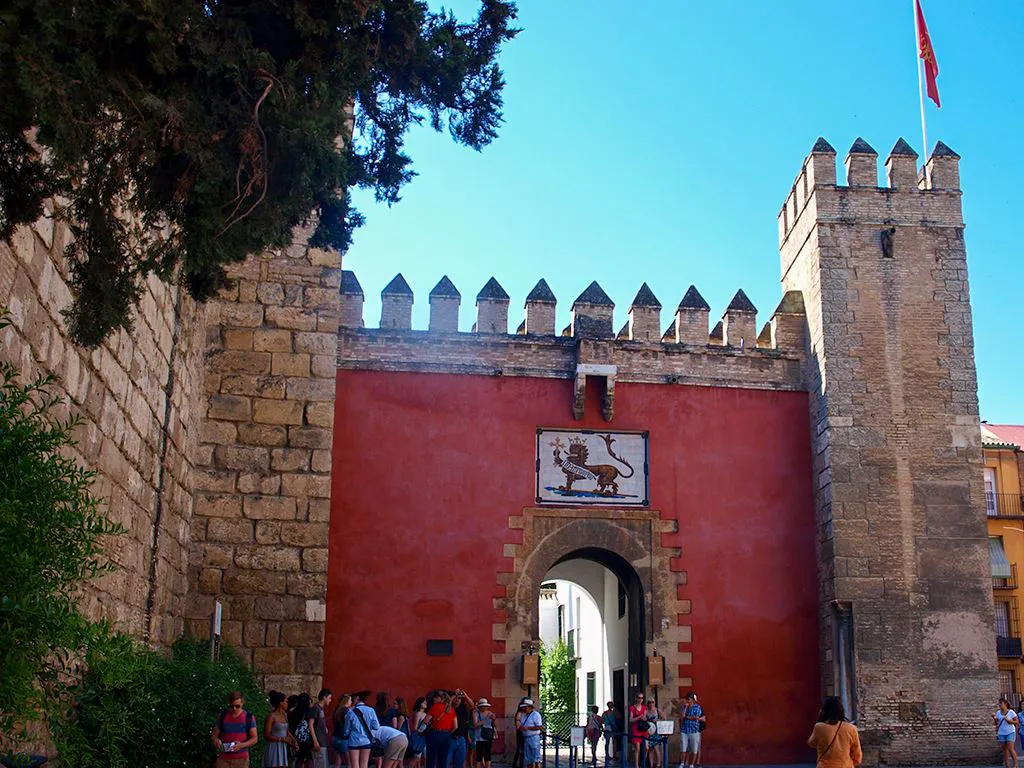
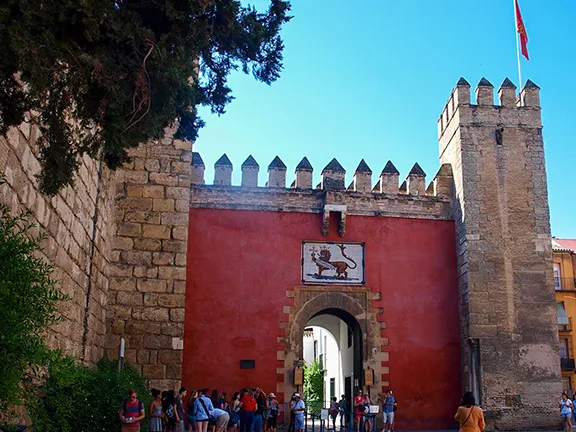
Puerta de Leon Seville
Tucked away in the corner of Plaza Virgen de los Reyes, only 50 metres south west of the Archivo de Indias, is the less than imposing Puerta del León. It is easily missed and the rather bland exterior belies the treasures that lie within. This is the entrance to the Real Alcazares de Seville.
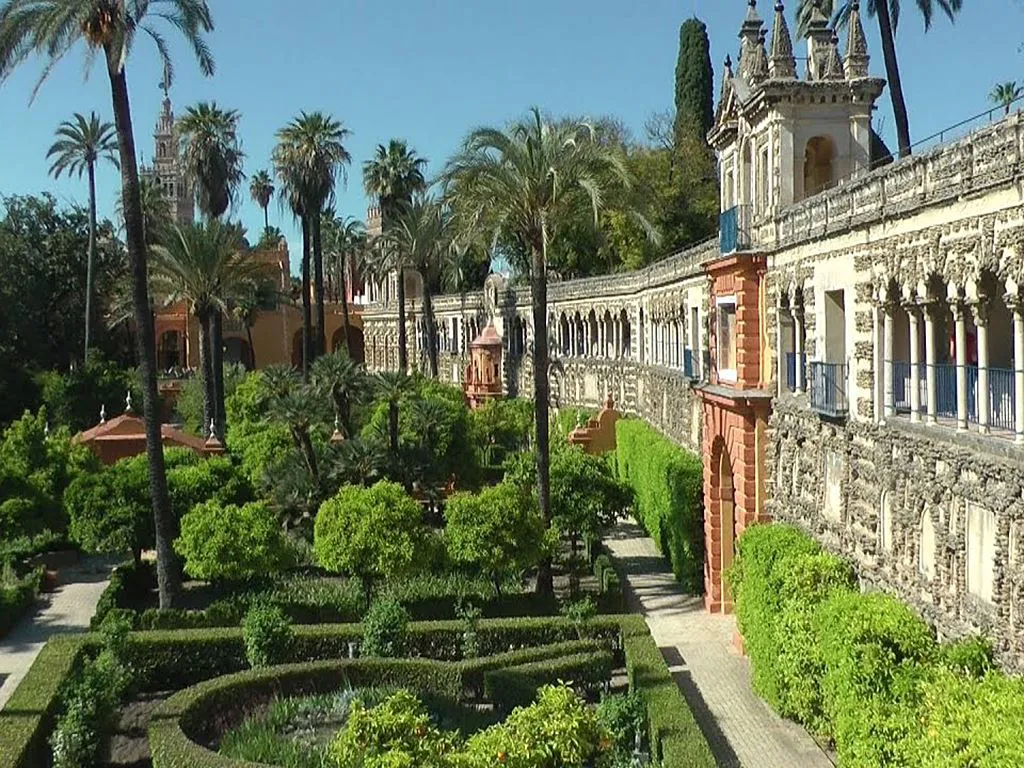
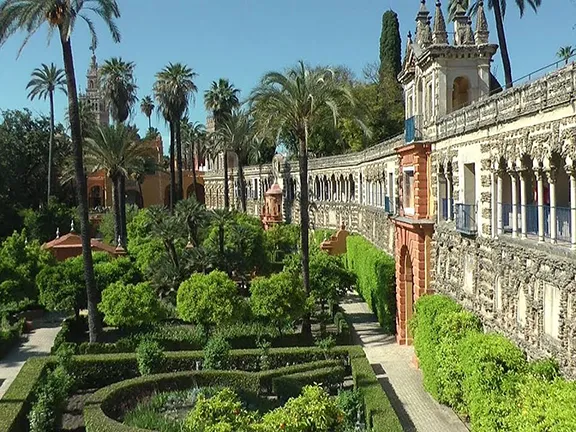
Alcazar gardens
Declared a World Heritage site in 1987, the Alcazar of Sevilla site is a complex of palaces that have been built by various monarchs. With more than 1000 years of history, the Alcazar contains Spain’s oldest palaces and some of the best examples of Mudejar architecture in Spain. It gained worldwide prominence in 2016 when it was used as the set for some of season 7 of the American drama series, ‘Game of Thrones’.
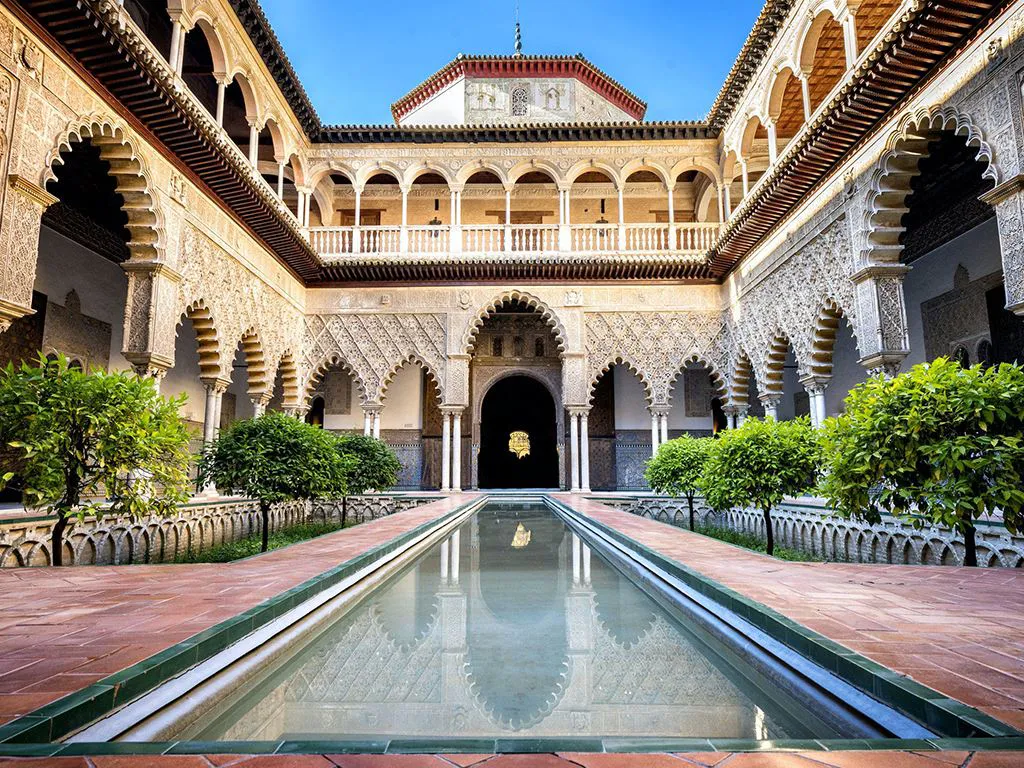
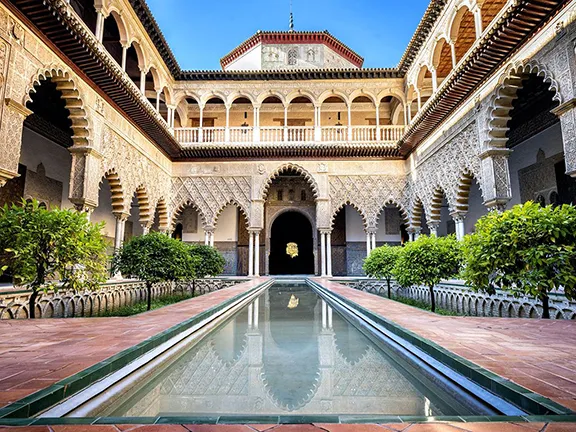
Alcazar Palace
The 39,000 square metres that make up the alcazar was, originally, the Roman city of Hispalis. In those days the Rio Guadalquivir almost lapped the edge of the city.
When the Muslims arrived, in 711 AD, they established themselves near the Mosque, now the cathedral, on the location of the present day Collegiate Church of El Salvador.
Two years later, in 713 AD, the Caliph of Cordoba, Abdurrahman III an-Nasir, ordered new government premises, the Dar al-Imara, to be built on the southern flank of the city, just south of the cities hub of economic activity, the port, that was then situated in the vicinity of the Plaza del Triunfo. Dat al-Imara was the beginning of the Real Alcazares de Seville.
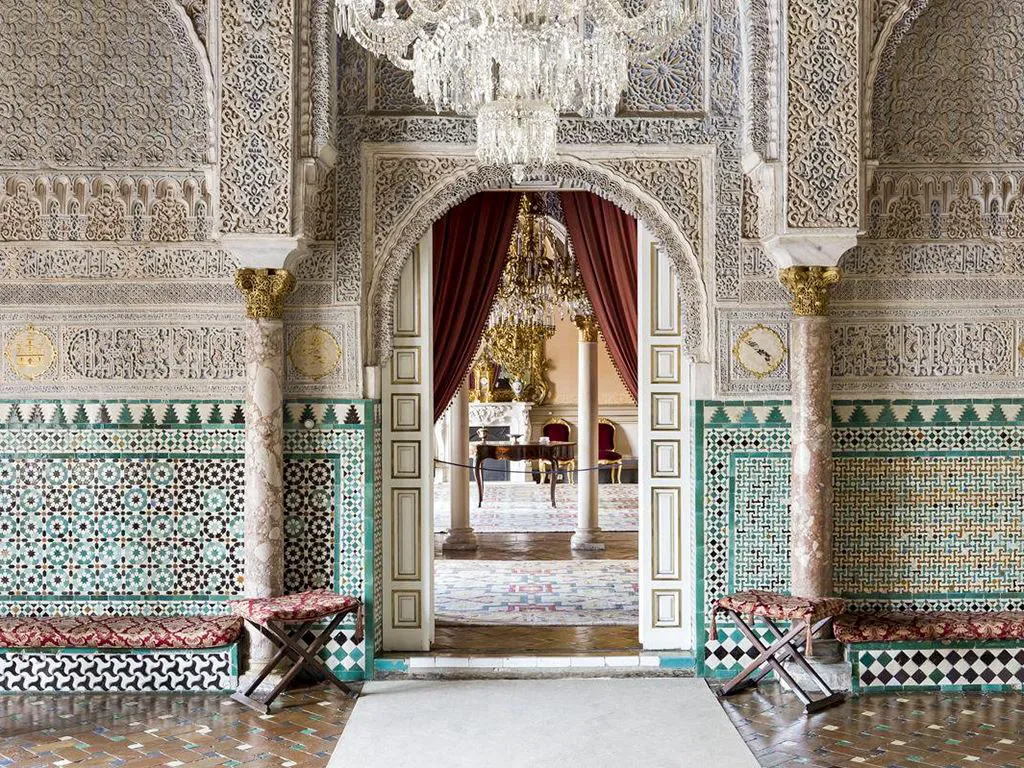
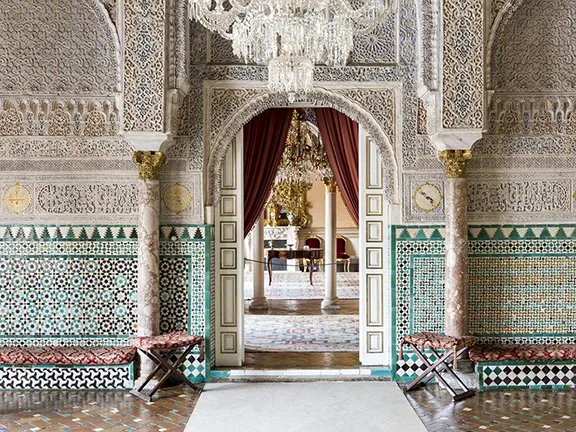
Palce interior
Later on, the Abbadids, who ruled Seville and its surroundings during the 11th century Taifa period, would add a new Alcazar to the palace built for the Umayyad government. This new palace, al-Mubarak, 'The Blessed', became the hub of the city's official and literary life.
The Almoravids and Almohades, who ruled al-Andalus from Seville from the late 11th century to the 13th, would subsequently expand the palace all the way to the Guadalquivir. In the twelfth century, the Almohades added their own buildings to the structures erected earlier, those ruins remain as the only examples of their kind in the world. As a matter of interest, they were also responsible for the Giralda tower, now attached to the Cathedral.
Ixbilia, as it was then known, was conquered by the Castilians early on during the reconquest, in 1249. The Alcazar became a Royal Residence and remains so today. Palaces sprang up over the next few hundred years. Alfonso X of Castile built a Gothic Palace in the middle of the 13th century and Pedro I built a palace in the Arabic style between 1356 and 1366. It is now called the Mudéjar Palace.
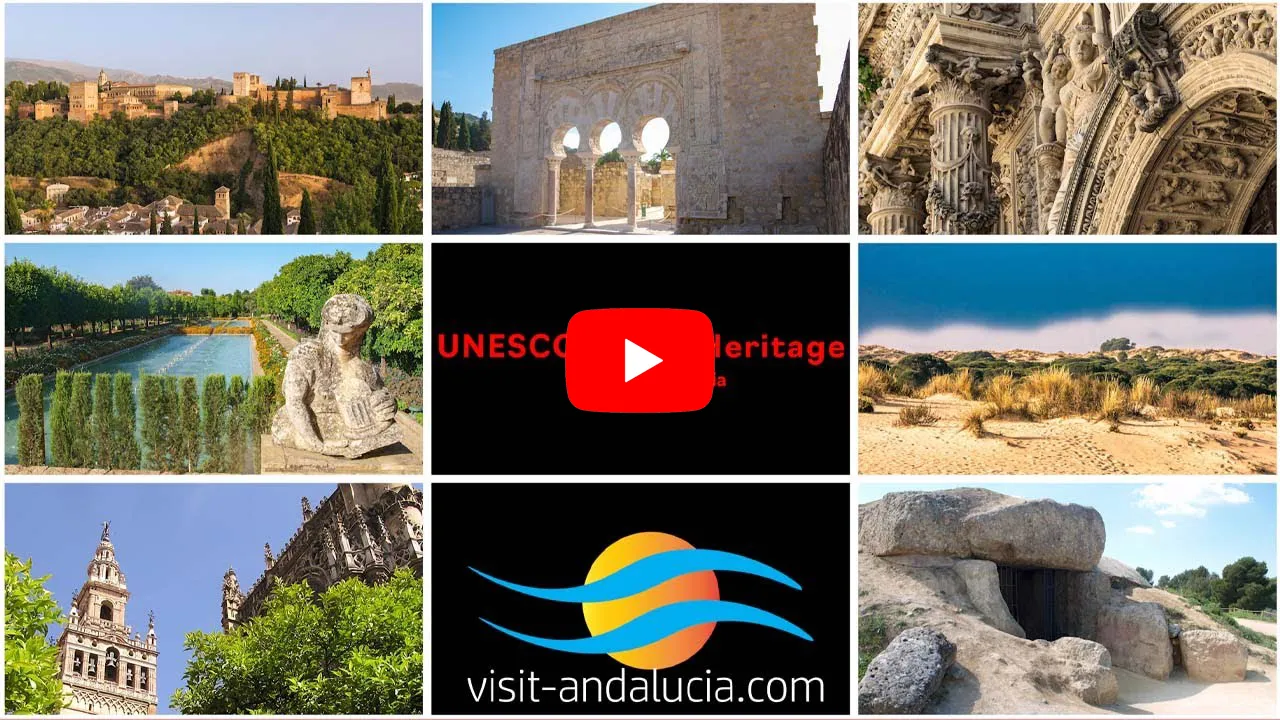
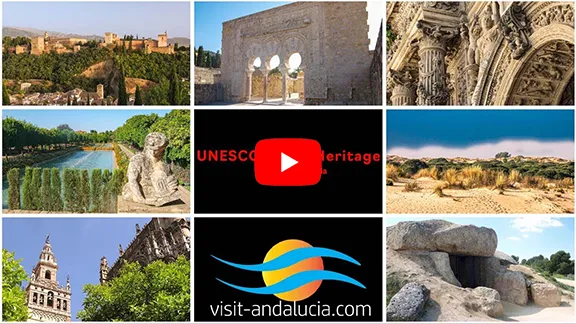
Video By: Julie Evans
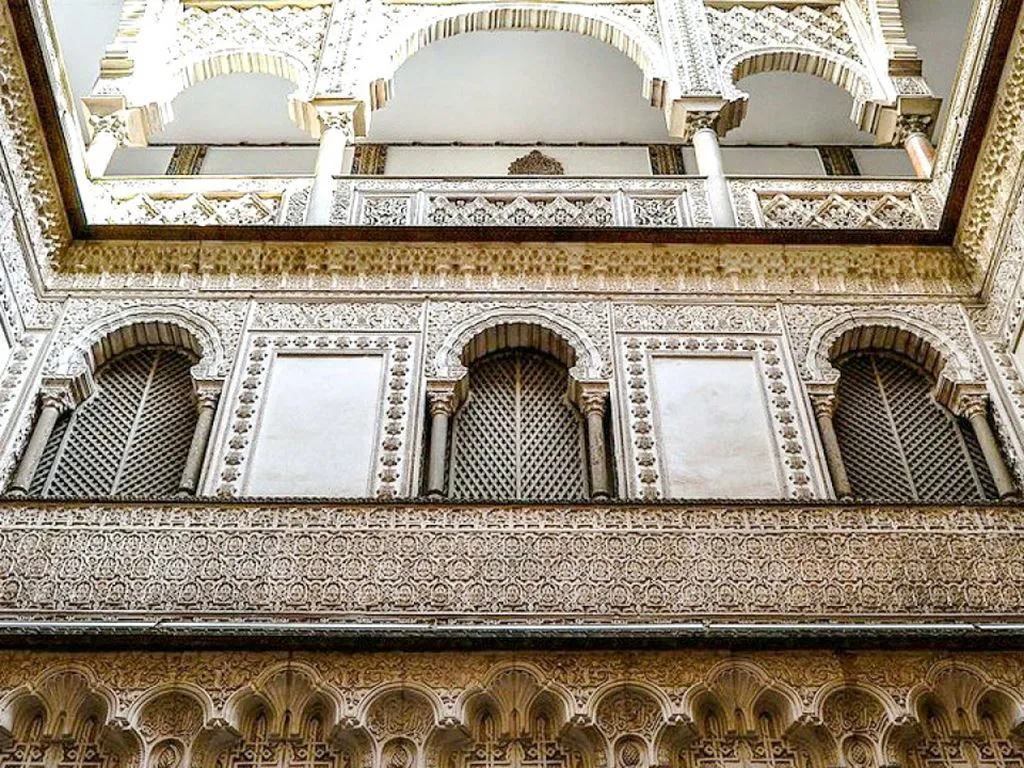
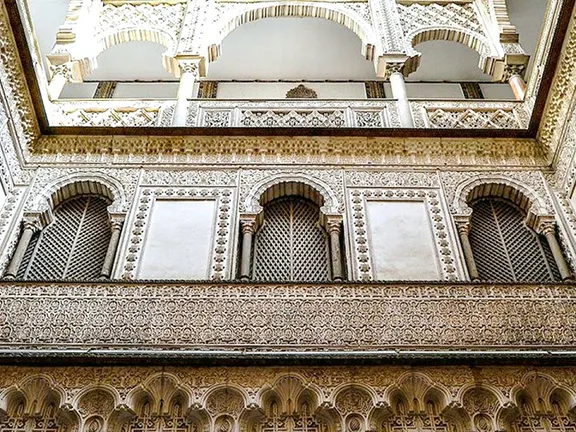
Palace of Pedro I
Following the overall reconquest of al-Andalus, in 1492, the Renaissance period made its mark on the Palaces within the Alcazar.
The Courtyard of the Maidens was refurbished in a Renaissance style. Magnificent artesonados (wooden ceilings of interlaced beams with decorative insertions) were created all through the sixteenth century, still upholding the Mudéjar aesthetic and staying faithful to the original spirit of the building, the most remarkable being the one that looks down over the spacious Hall of the Ambassadors.
Artistic treasures from the Renaissance period include the ornate tiled altar that stands in the chapel of the Catholic Monarchs and the pictorial altarpiece preserved in the Admiral's Quarters, dedicated to the Virgin of the Seafarers. The Halls of Charles V are filled with a fantastic collection of Flemish-style eighteenth-century tapestries telling the story of the conquest of Tunis.
During the 19th century, the Bourbon monarchs refurbished some of the halls and decorated them with tapestries and chandeliers, clocks, furniture and an impressive collection of paintings.
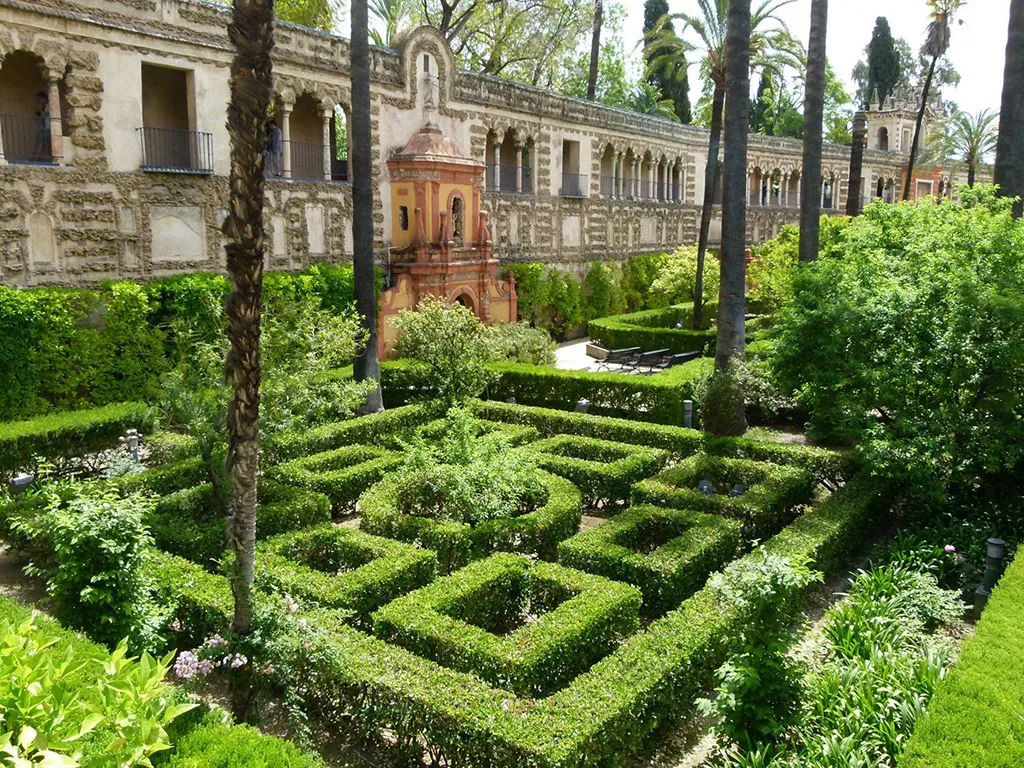
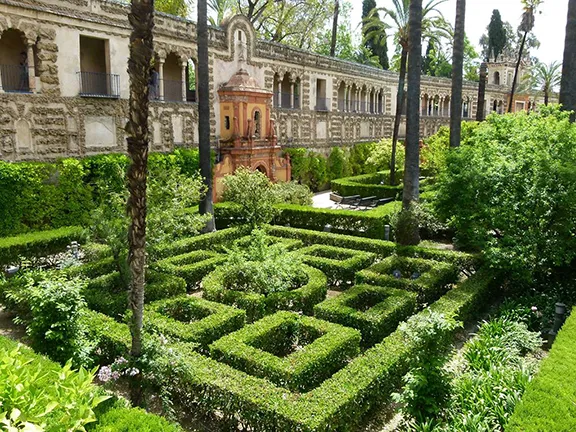
Alcazar gardens
Finally, you arrive in the gardens. Founded in the 10th century, they have been modified and adapted over the thousand year history of the Alcazar. They are probably the most impressive gardens in Spain.
There are twelve distinct gardens spanning the period, from the 10th century Moorish gardens in front of the palaces built by Alfonso X and Pedro I, remodelled in the Renaissance style in the 17th century, through the Mudejar period and into the modern age.
It is easy to spend a couple of hours just wandering through these gardens. Look out for the Flower Garden with its water jet features and the Troy Garden that has a central fountain dating back to the 12th century. The Pond Garden, with its 16th century statue of Mercury, was used until the 15th century as a cistern to collect the water from the Roman aqueduct that ran to Carmona.
Water is a constant feature in the gardens and, beneath the Dance Garden, you will find the Baños de Maria Padilla. Groin vault arches cover a large alberca or water tank. A beautiful grotto at one end is reflected in the still waters, a photo shoot if ever there was one and easily recognised as the Water Gardens of Dorne, if you are a Game of Thrones afficionado. Maria Padilla was mistress to Pedro I of Castile and enjoyed bathing in the alberca, hence its name.
The more modern gardens include The Ladies Garden, notable for its Fountain of Fame. This is on the site of the original Moorish orchard. The fountain was once surrounded by statues of fifteen mythological figures, of which just six remain. Finally I must mention the Garden of the Marquess de la Vega-Inclan and the Garden of the Poet, both very modern.
The gardens also act as a plant repository. There are almost 200 species represented by over 20,000 individual plants; herbs, fruit and palm trees, flowering shrubs and perennials, from all over the world, the south Pacific, Africa, America, Asia as well as species from the Mediterranean.
Despite its unassuming entrance, the Real Alcazares de Seville is a peaceful haven right in the centre of a bustling, busy city. It is easy to see how they provided the inspiration for poets and artists such as Sorolla. Passing through the Puerta del León you are transported into a beautiful, tranquil space, and an era long past.
Together, these three buildings form a remarkable monumental complex in the heart of Seville. The cathedral and the Alcázar – dating from the Reconquest of 1248 to the 16th century and imbued with Moorish influences – are an exceptional testimony to the civilization of the Almohads as well as that of Christian Andalusia.
The Giralda minaret is the masterpiece of Almohad architecture. It stands next to the cathedral with its five naves; the largest Gothic building in Europe, it houses the tomb of Christopher Columbus. The ancient Lonja, which became the Archivo de Indias, contains valuable documents from the archives of the colonies in the Americas.
The Real Alcazar is one of the most popular attractions in Seville, and there’s almost always a long line to enter (yes, I’ve been stuck in that line before!).
To save time, I highly recommend buying your tickets in advance. And if you’re a history-lover like me, you'll enjoy the Alcazar guided tour where you'll learn more about the palace’s history and the personalities who lived in it.
Click below to see the top-rated Seville Alcazar tours.
Planning to also visit the Seville Cathedral? This combined tour of the Alcazar and the Seville Cathedral offers great value!
Visiting Seville? Check out our other articles on what to see and do in the city:
Travelling to/around Spain and need some help? Here are our favourite travel resources.
We usually use Booking.com to look for hotels or apartment rentals. Lots of choice & you can unlock more discounts with their Genius loyalty programme!
To research transportation options around Spain, we like using Omio. It’s an easy way to compare different modes of transport and prices in one place.
For last-minute holiday deals, check out Expedia UK.
Looking for things to do? Viator has a huge catalog of activities and tours across many cities in Spain. We also love Get Your Guide!
Guruwalk is our favourite platform to find the best free walking tours in a city.
For money transfers or spending overseas in foreign currency, Wise is our favorite borderless banking service.
Travel insurance is a must to protect against emergencies and unexpected incidents. Get a quote from SafetyWing here.
Visit the official website for Real Alcazar de Seville